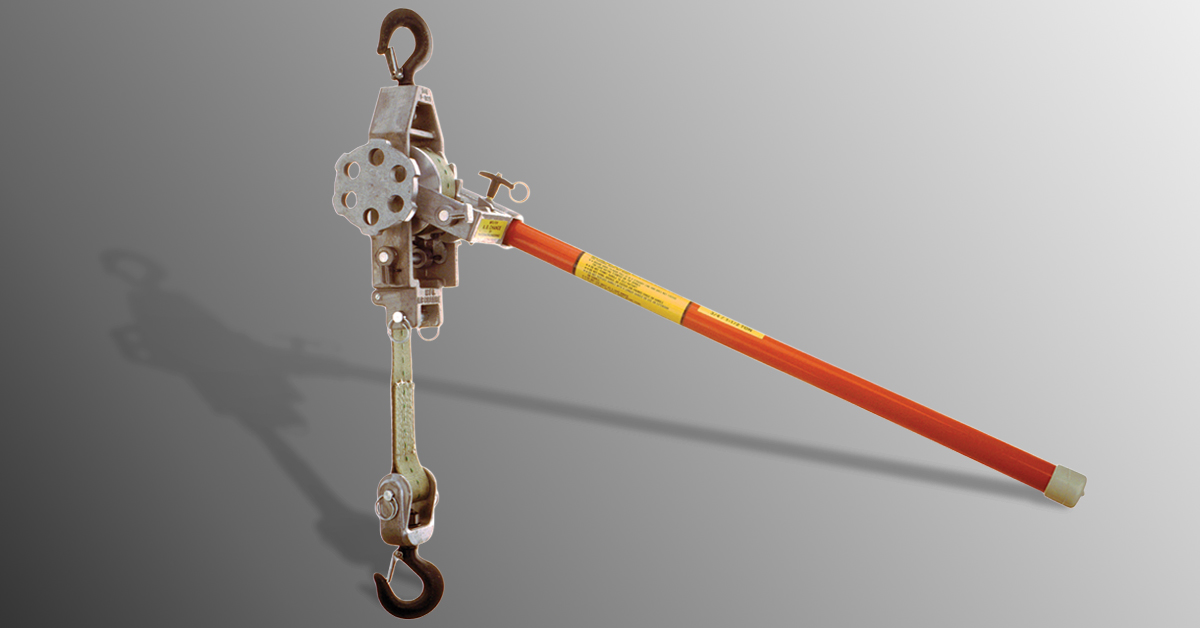Mechanical hoists, both nylon strap and chain types, are useful devices in electrical utility maintenance procedures. Proper care and maintenance of mechanical hoists can ensure a long service life. Therefore, it is important to recognize common practices and avoid some misconceptions about these devices which may shorten device lifespan, endanger the operator, or damage equipment and property.
Myths About Mechanical Hoists :
There are several misconceptions about maintaining and using mechanical hoists, including the following :
It’s okay to perform field modifications such as removing the safety latch from a mechanical hoist to connect the load more easily.
Any modification made to this equipment compromises its integrity, voids the warranty, and endangers the user and the surrounding environment. Removing the latch is dangerous and will not allow the load to be properly secured.
Allowing a hoist to self-ratchet is a faster way to lower a load.
Self-ratcheting is a very dangerous practice and must not be allowed. If the hoist is in the ‘lower’ mode, releasing the handle can cause a rapid back-and-forth motion. This motion is caused by the combination of the load mass and the natural oscillation frequency of the handle. The rapid-fire motion will destroy the hoist. This may cause serious injury and damage to other equipment.
Nylon Straps have insulating properties.
Operators should never depend on the Nylon Strap for insulation when conducting live-line maintenance. The nylon straps should always be considered conductive. Always use an Epoxiglas® Hoist Link Stick or an Expoxiglas® Crossarm Link Stick with all live-line Nylon Strap Hoist applications.
Mechanical Hoist Maintenance Tips :
Mechanical hoists should always be inspected for damage before use. A stretched opening on the hook is a common sign the hook has been overloaded or placed in a bind. Additional signs of damage include safety latches that no longer align properly, chains and straps which show signs of bend, wear or rusty links, as well as frayed nylon straps. All damaged or worn hoists should be removed from service and repaired or replaced. Mechanical hoists should be kept clean and lubricated. Periodic inspection and cleaning should be performed to ensure the tool is free of debris and is well lubricated for proper working conditions.
Any hoist removed from service must be thoroughly repaired with factory components by a qualified technician and properly load tested before returning to service.
Mechanical Hoist Storage Best Practices :
When storing mechanical hoists, it is best to follow a set procedure. Incorrect storage can damage the mechanical hoists over time. The following steps should be implemented when storing this equipment.
- Clean and lubricate equipment prior to storage
- Store equipment in a clean, dry environment shielded from the weather and away from corrosive chemicals
- Store on racks free of tangles, kinks, or knots, allowing dry air to circulate around the chains or straps
- Store away from extreme temperatures
Contact CHANCE Today for Mechanical Hoist Help
When using CHANCE products, always follow all applicable laws, rules, and safe work practices as set by your employer. Please contact your local CHANCE Territory Manager for help with any questions about these or any other CHANCE products, or to schedule a training session with one of our knowledgeable training experts. To browse our complete listing of mechanical hoists and other lineman tools, visit our website today.

